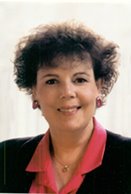QuiltWorks Northwest located in Bellevue, is a great destination for all things sewing, quilting, and beading! From fabrics and notions to batting, books, and embellishments, we offer an extensive selection of high quality sewing, quilting, and jewelry supplies to spark your imagination and satisfy your creative needs. You’ll also find a full line of BERNINA sewing machines, embroidery software, and sewing cabinets, as well as an on-site service department that specializes in expert maintenance and repair of all sewing machine makes and models.
Located at 107th Avenue NE, we’re a casual, welcoming gathering place where handcrafters of all skill levels can enjoy a wide range of classes and fun store events. When you need assistance, our friendly, knowledgeable staff members are always on hand to offer personalized service, helpful product advice, and continuous project support throughout your creative journey!
Finishing School
Oct 8, 2016 at 10:30 am to 1:30 pm
Discover the joy of transforming unfinished projects into amazing quilts. We will explore construction techniques and setting blocks and delve into designing and sewing the perfect border, all while engaging in a lively problem-solving session that will convert challenges into marvelous, artistic solutions!
Thread Toppings
Sat, Oct 8, 2016 at 2:00 pm to 5:00 pm
Thread is no longer a 'Plain Jane' necessity - it's now available in many luscious colors and types. Steering your way through the sea of threads out there can be a bit daunting. Experiment while you learn how to match thread to the appropriate needle, make the tension setting your best friend and troubleshoot your way to fun and fancy sewing.






















